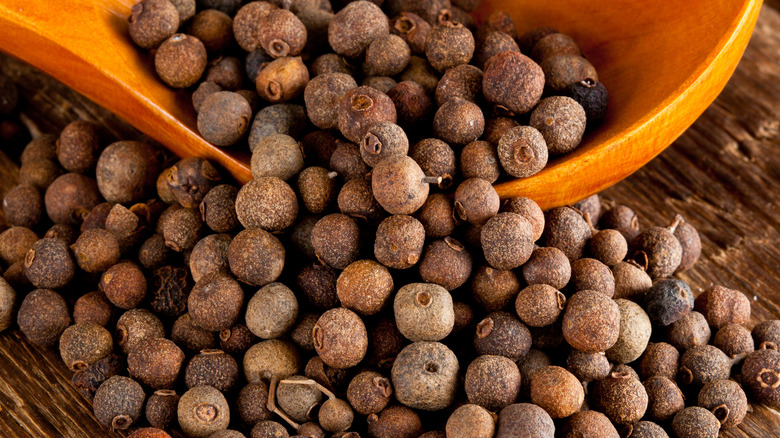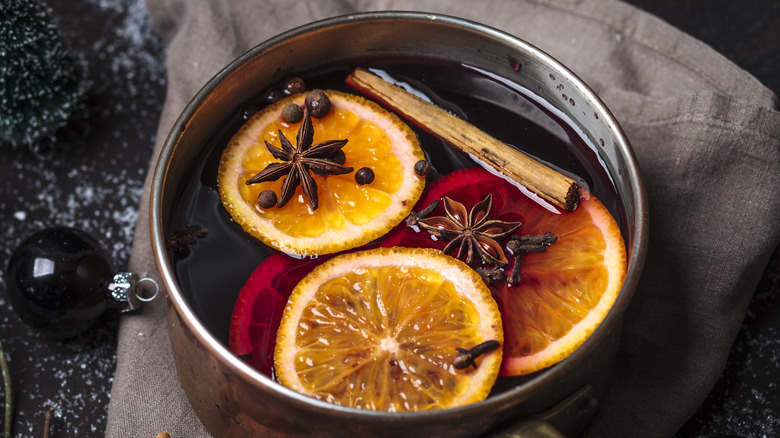The Best Times To Use Whole Allspice Vs Ground
Adding spices to a recipe is like putting the cherry on top of an ice cream sundae. They provide depth of flavor that ties the ingredients together and while it's important to consider what spices and how much to use, it's also best to consider their state and the time during your cooking that's best to incorporate them. This is especially important for a pantry staple like allspice that comes both ground and whole. Want to know when it's best to use each variety and when to add them in? Well, Food Republic spoke to Jennifer Kellison, director of innovation at Frontier Co-op and Simply Organic, in an exclusive interview to get you all the answers.
According to Kellison, the general rule of timing for adding spices to your dish is that it depends on whether the spices are ground or whole. Kellison explained, "Whole spices are typically used in early cooking, while ground spices are often used once the cooking process has started."
Since heat affects the flavor release of spices, it's good to know how much heat exposure your spices should get, which depends on whether they're whole or ground. So, since whole spices need more time to release their oils and permeate the dish, you want to add them in the first stages of cooking. This goes for all kinds of spices, including allspice — just note that if you're using ground allspice, it's easier to add throughout the cooking process because the finer texture incorporates quickly. She also informed us that "tasting the dish throughout the cooking process is always encouraged, so you can adjust the seasoning as needed."
Best dishes for ground and whole allspice
Of course, ground allspice works differently than whole berries. Jennifer Kellison explained, "Whole allspice is best used when you want to infuse the flavor of allspice into a liquid, like a stock base, soup, or sauce." Because allspice has a versatile flavor profile, it's as at home in a sweet masala chai as it is in a rich phở broth, yet it's also one of the best spices for mulled wine. Allowing the whole allspice berries to release all their oils into your liquid will help make the most of their flavor. Just be sure you take note of Kellison's advice: "Once the flavor of the whole allspice has been extracted, it can then be strained out."
On the other hand, according to Kellision, "Ground allspice is used when you want the allspice flavor integrated in, such as in meat rubs, marinades or baked goods." Ground also has a stronger taste, which is why it can be added later to your recipes and why it commonly packs more of a punch in the dishes mentioned. As Kellison says, you'll likely see ground allspice in desserts like individual-size pumpkin pies and spice cakes, which easily absorb that strong taste. But, allspice can also bring a pop to savory dishes, and Kellison noted, "Allspice brings a warming and fruity note to food," so make sure that you pair it with like flavors.


